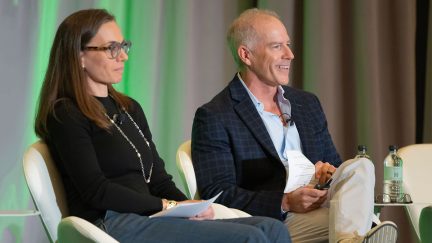For more stories like this, sign up for the PLANADVISERdash daily newsletter.
J.P. Morgan Unveils Reenrollment Impact Tool
The J.P. Morgan Reenrollment Analyzer tool, powered by Business Logic’s PlanOutcome solution, is available for advisers to use with larger plan sponsors.
Many plan sponsors have added target-date funds to their investment menus hoping to guide participants to better asset allocation, according to Catherine Peterson, director of retirement insights at J.P. Morgan Asset Management. But because of participant inertia, the adoption rate of such investments is often disappointing. “The Reenrollment Analyzer enables advisers and plan sponsors to envision how a reenrollment could positively impact participant asset allocation and improve income replacement rates,” Peterson said.
Using plan-specific inputs, the tool calculates the projected impact that improved asset allocation could have on a plan’s average income replacement rate (IRR). The data that can be plugged in include average salary, average savings rate, number of plan participants and plan asset allocation for each of the plan’s current investments.
The IRR measures the percentage of income a participant can expect to replace from their retirement savings (excluding Social Security), and it can be considered a key metric for evaluating 401(k) plan effectiveness. The Reenrollment Analyzer compares the plan’s current average IRR to the projected IRR that would result from moving a specified percent of participant assets into a target date fund by conducting a re-enrollment. A re-enrollment effectively shifts participant dollars out of their current investment allocations and into the plan’s Qualified Default Investment Alternative (QDIA).
“We are excited to provide another resource to plan sponsors and our retirement-focused financial advisers [that] helps to enhance the decision-making process,” said John Galateria, head of defined contribution investment solutions, J.P. Morgan Asset Management. “The customized analysis can be a powerful demonstration of the rationale for conducting a reenrollment, encouraging improved asset allocation and, ultimately, better retirement outcomes for participants.”
You Might Also Like:

Rethinking Opportunities for RIA Growth

Advisers Step Up as Clients Face Market Uncertainty
